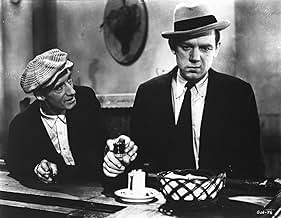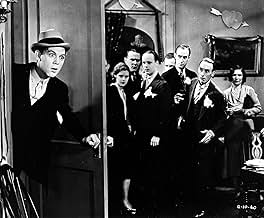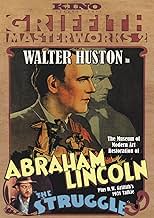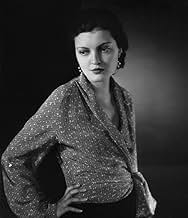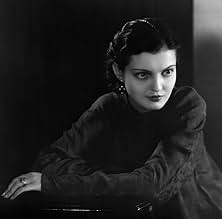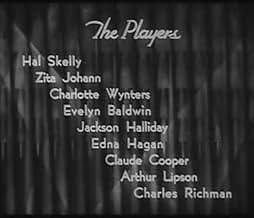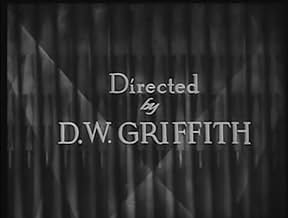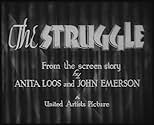Adicionar um enredo no seu idiomaA young couple's marriage is jeopardized by the husband's descent into alcoholism.A young couple's marriage is jeopardized by the husband's descent into alcoholism.A young couple's marriage is jeopardized by the husband's descent into alcoholism.
Kate Bruce
- Granny
- (não creditado)
Tammany Young
- Barfly
- (não creditado)
- Direção
- Roteiristas
- Elenco e equipe completos
- Produção, bilheteria e muito mais no IMDbPro
Enredo
Você sabia?
- CuriosidadesThis was the final feature-length film directed by D.W. Griffith.
Avaliação em destaque
....when you consider some of the other movies for the year - "The Public Enemy", "Bad Girl", "The Maltese Falcon", "Waterloo Bridge", and that "The Struggle" was released in December of that year. Like the other reviewers, I was a bit hesitant to watch it - the last time I saw it was in the early 70s, at a film society and the only information I could find out about it then was in Anthony Slide's book "The Griffith Actresses" and he spent the article vigorously defending it against what critics had said when it was first released. They hated it and apparently there was even laughter in the first night audience. They called it old fashioned and criticized the banal dialogue - by 1931 Griffith was finished in Hollywood and critics were not going to view "The Struggle" with an unbiased eye. From the moralizing forward to the fact that there didn't seem much of a reason for Jimmy's descent into Hell, shows why it wasn't a success at the time. Sure, the depression was on but the public probably didn't want to be reminded of what, to many families (according to the forward) was a too real problem.
The movie took a sermonizing, finger shaking view. The prologue didn't seem to serve a purpose - except to show off the overlapping dialogue technique and to show that people were getting drunk (it was 1911) even before prohibition. 1923 - Zita Johann plays Florrie, a typical Griffith heroine, sweet, innocent and believing in her man - Jimmy (Hal Skelly), who, even before they marry, is considered the life of the party. The thing I found hard to swallow was that there was no huge crisis that happened for Jimmy to fall off the wagon. Of course, before his marriage he takes "the pledge" and they have several happy years, before a bar-tender's snide remark at his drink of choice - sarsaparilla, causes him to go on a bender. In another scene the thought of having to wear a lavender tie causes him to miss his sister's engagement for a night on the town. The best scene, in my opinion, is Hal Skelly's bout of the D.Ts - his was the best performance in the movie. I believe he could have developed into a great character actor, if he had lived. Zita Johann had been recruited from Broadway, where, along with Clark Gable, she had appeared in the play "Machinal", but in this movie, she looked very new and obviously wasn't a natural for the movies. (She only made a few, including "The Mummy" before she returned to the stage). Most of the performances seemed stiff and lacking in the direction that Griffith should have provided. Helen Mack made her debut as a "catty" girl at the engagement party and Evelyn Baldwin, who became Mrs. D.W. Griffith in 1936 played Jimmy's sister, Nan.
The movie took a sermonizing, finger shaking view. The prologue didn't seem to serve a purpose - except to show off the overlapping dialogue technique and to show that people were getting drunk (it was 1911) even before prohibition. 1923 - Zita Johann plays Florrie, a typical Griffith heroine, sweet, innocent and believing in her man - Jimmy (Hal Skelly), who, even before they marry, is considered the life of the party. The thing I found hard to swallow was that there was no huge crisis that happened for Jimmy to fall off the wagon. Of course, before his marriage he takes "the pledge" and they have several happy years, before a bar-tender's snide remark at his drink of choice - sarsaparilla, causes him to go on a bender. In another scene the thought of having to wear a lavender tie causes him to miss his sister's engagement for a night on the town. The best scene, in my opinion, is Hal Skelly's bout of the D.Ts - his was the best performance in the movie. I believe he could have developed into a great character actor, if he had lived. Zita Johann had been recruited from Broadway, where, along with Clark Gable, she had appeared in the play "Machinal", but in this movie, she looked very new and obviously wasn't a natural for the movies. (She only made a few, including "The Mummy" before she returned to the stage). Most of the performances seemed stiff and lacking in the direction that Griffith should have provided. Helen Mack made her debut as a "catty" girl at the engagement party and Evelyn Baldwin, who became Mrs. D.W. Griffith in 1936 played Jimmy's sister, Nan.
- kidboots
- 26 de set. de 2010
- Link permanente
Principais escolhas
Faça login para avaliar e ver a lista de recomendações personalizadas
Detalhes
- Data de lançamento
- País de origem
- Idioma
- Também conhecido como
- Ten Nights in a Bar Room
- Locações de filme
- Empresas de produção
- Consulte mais créditos da empresa na IMDbPro
- Tempo de duração1 hora 27 minutos
- Cor
- Proporção
- 1.20 : 1
Contribua para esta página
Sugerir uma alteração ou adicionar conteúdo ausente


